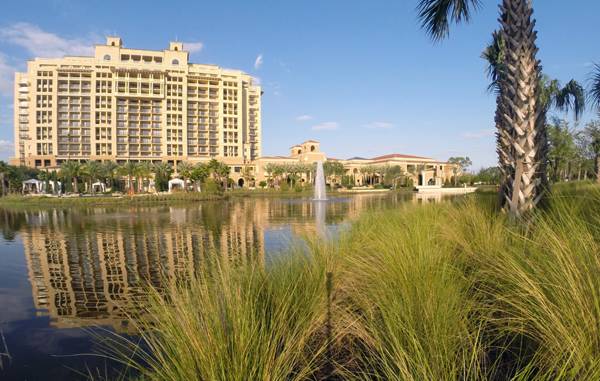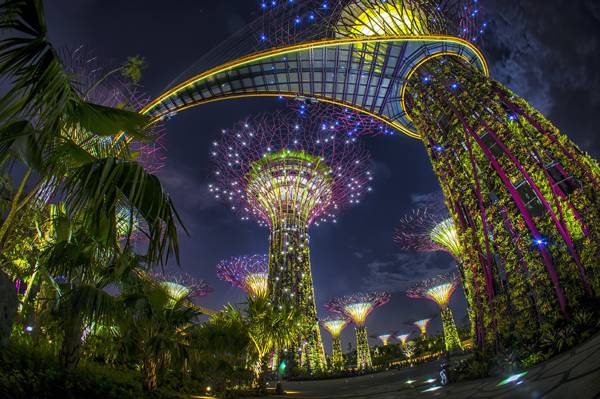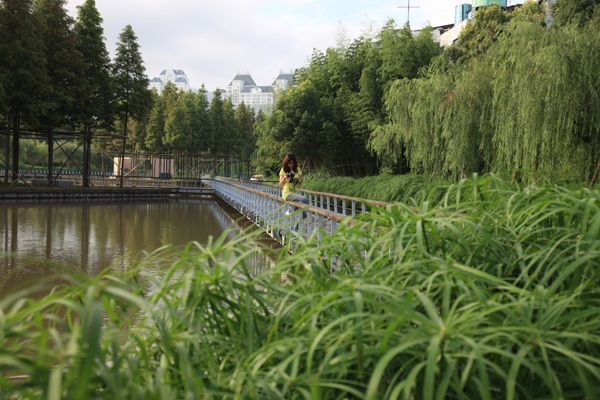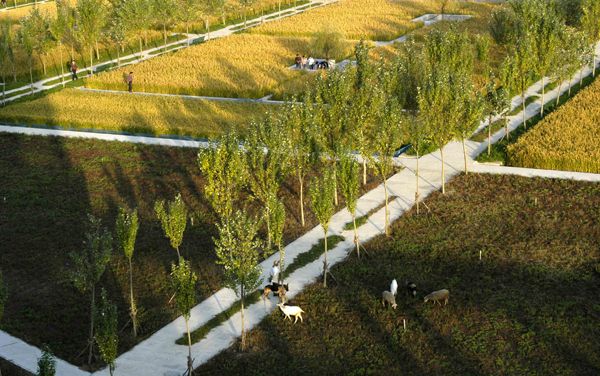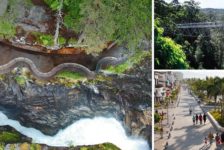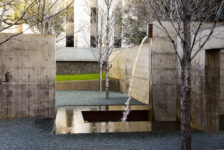Who’s leading the ecological revolution of landscape architecture? For centuries, humans have chosen to force the natural environment into fitting our needs and desires. This attitude of transformation, rather than working alongside and conforming to nature, has led to a host of problems. The built environment has popped up without consideration of its surroundings, leading to inefficient energy use, pollution, and water shortages. Within the last 10 years, there has been a trend toward more “sustainable,” “ecological” and “resilient” designs that seek to work alongside the environment to improve the quality of our towns and cities. However, how do we tell the difference between a functionally robust design and one that looks good on the board but fails in the field? How do we know what’s truly sustainable? Given that life is often complex, and that many of the natural systems we rely upon as we design are both unpredictable and continuously changing, how do we determine what is a minimally destructive impact?

Don’t miss our hit article looking at sustainable practices; 10 Practices Showing That “Sustainability” is More Than Just a Buzzword!: Credit: CC 3.0, by Adityamail
5 Great Ecological Powerhouses of Landscape Architecture:
5. EDSA Design The firm was formed in 1960, and since the beginning has been intrigued by the relationship between built form and the natural environment. In designing urban resorts, campuses, urban districts, or residential communities, EDSA takes a village-centered approach in its projects that foster social diversity and resource conservation.
Curiosity about the dynamic balance among environmental, economic, and social components of a place brings about the firm’s willingness to generate long-term relationships between users and place, so that users also understand the value of doing what is right for the long-term wellbeing of the planet and its people. At a time where desired vacation spots begin to take over more areas of remote and well-known countries, projects such as the Indura beach and golf resort and Castiglion del Bosco are only a few of the many examples of the firm’s portfolio that demonstrate how such a big market of tourism is being guided in the right direction for the future. 4. Grant Associates Grant Associates gained its reputation from the incredible £500 million Gardens by the Bay project in Singapore. This firm puts a huge amount of effort into delivering creative approaches to ecological and sustainable landscape design and the integration of landscape with engineering and architecture to create highly distinctive places with a strong ecological character. Its mission statement of bringing humans into closer contact with nature through landscape and urban design is embodied in a project such as Gardens by the Bay that begins to rekindle our human instincts about the beauty and wonder of nature and raises awareness for sustainability and conservation. WATCH: Gardens by The Bay | Grant Associates 3. HOK HOK is a big firm offering architecture, landscape architecture, engineering, interior design, urban planning, and consulting services. From residential to commercial to government projects, the firm tackles the most common spaces, such as office complexes, to ensure that when they speak about sustainability, ecology, and resilience designs, they are starting with these small-scale places. Related Articles:- 10 Practices Showing That “Sustainability” is More Than Just a Buzzword!
- 5 Landscape Architecture Buzz Terms, Explained!
- Exceptional Ecological Park Reconnects Children With Nature
With a strong belief in biomimicry to inform design solutions, the firm states: “When it comes to designing for efficiency, balance, and resiliency, nothing beats emulating nature”. Master-planning projects such as a new hill town in India or Brunei Capital City are examples of how the influence of biomimicry has been deeply ingrained in HOK’s practice of aiming for ecological, economic, and resilient designs. 2. SWA Group Established in 1957, SWA Group is an international landscape architecture, planning, and urban design firm with offices around the world, from Los Angeles to Shanghai to the United Arab Emirates. The firm has an international reputation for excellence in environmental design and is a very good example of Landscape Urbanism in practice.
This forward-thinking, dynamic approach shows in the cityscape designs the firm creates. The firm is continuously seeking to understand and redefine what it means to design new and better forms of human habitation. In particular for landscape architects and urban designers, what role do landscape and ecological systems play in creating healthy, productive, and integrative urban frameworks? Such questions are asked and tackled in SWA’s large-scale design projects. Just take a look at the Suzhou Industrial Park Central Business District to see the kind of solutions that are being put forward by this firm. 1. Turenscape The Turenscape concept is “Nature, man and spirits as one”, and this firm was founded by Kongjian Yu to practice what he preached and support his research students. Now, as a leading ecological design firm in China, Turenscape has done well in restoring damaged or degraded landscapes. Projects such as Liupanshui Minghu Wetland Park or Beach of Qinghuangdao City are just two of the several successful projects in which the firm hasn’t been afraid to tackle ecological recovery. Aiming to wrestle with the environmental issues of China — starting with changing the national codes in order to make lasting design influences across the country — Kongjian Yu describes landscape, urbanism, and architecture as “an art of survival” in which “how we safeguard and recover an ecological, healthy environment” is a priority. – Even though our top five firms are numbered from five to one, there really isn’t a simple and justifiable reason as to why they shouldn’t all be represented as equals. In fact, what the list teaches us is that there is no singular approach that can be used to tackle the challenging environmental and ecological issues of today. Ecological design concerns itself with the environment, for that is the foundation upon which we live on this tiny jewel of a planet. But it also involves the human issues of community, respect for differing perspectives, and a willingness to be changed by what you learn from another’s point of view. At its heart, ecological design is systemic design, and each of these five firms has simply planted its roots in its own approach based on experience and research. We can only hope and strive for more firms to do the same for our planet. Recommended Reading:- The Biophilia Hypothesis (Shearwater Book) by Stephen R. Kellert
- Design with Nature by Ian L. McHarg
Article written by Win Phyo Return to Homepage
Published in Blog


